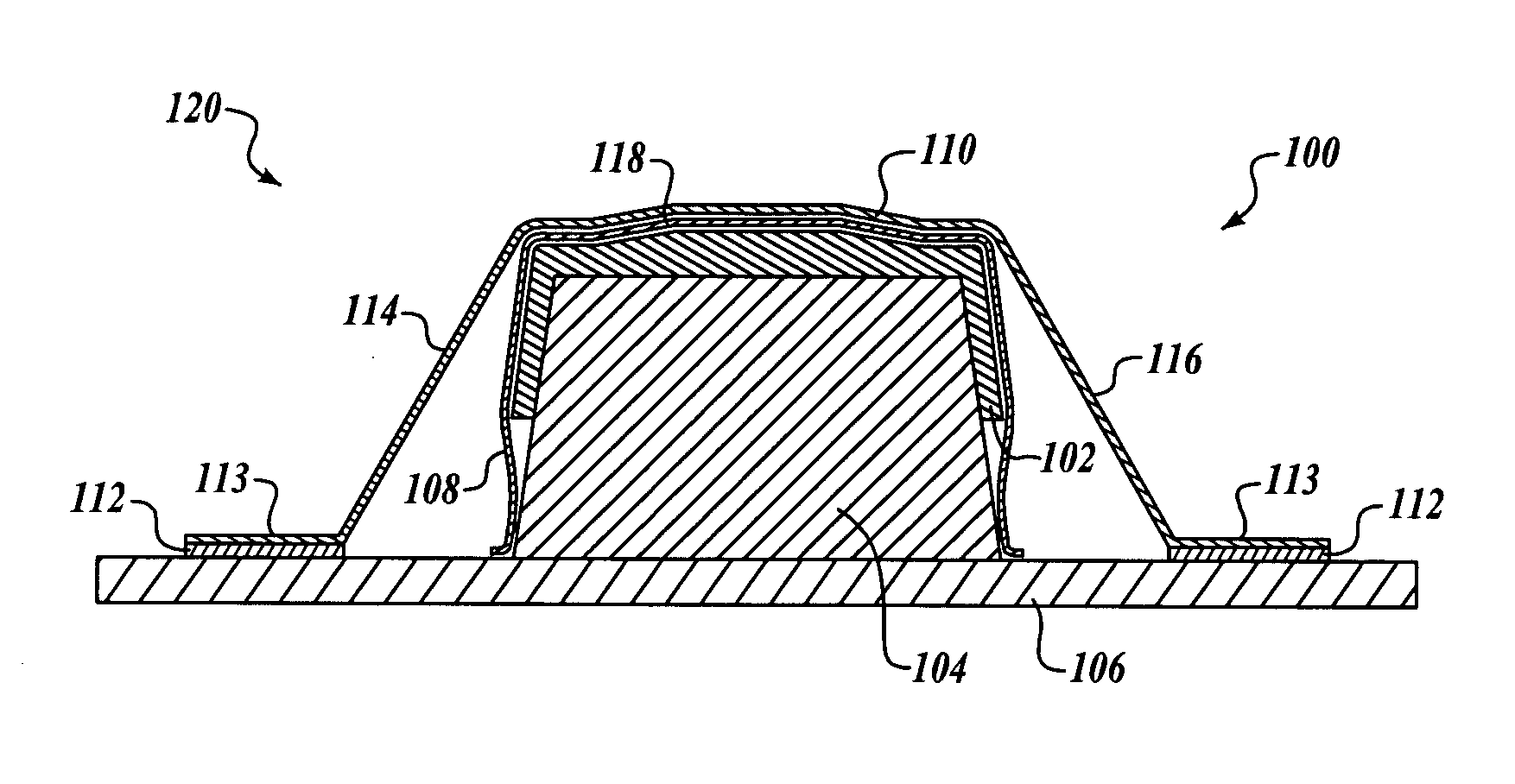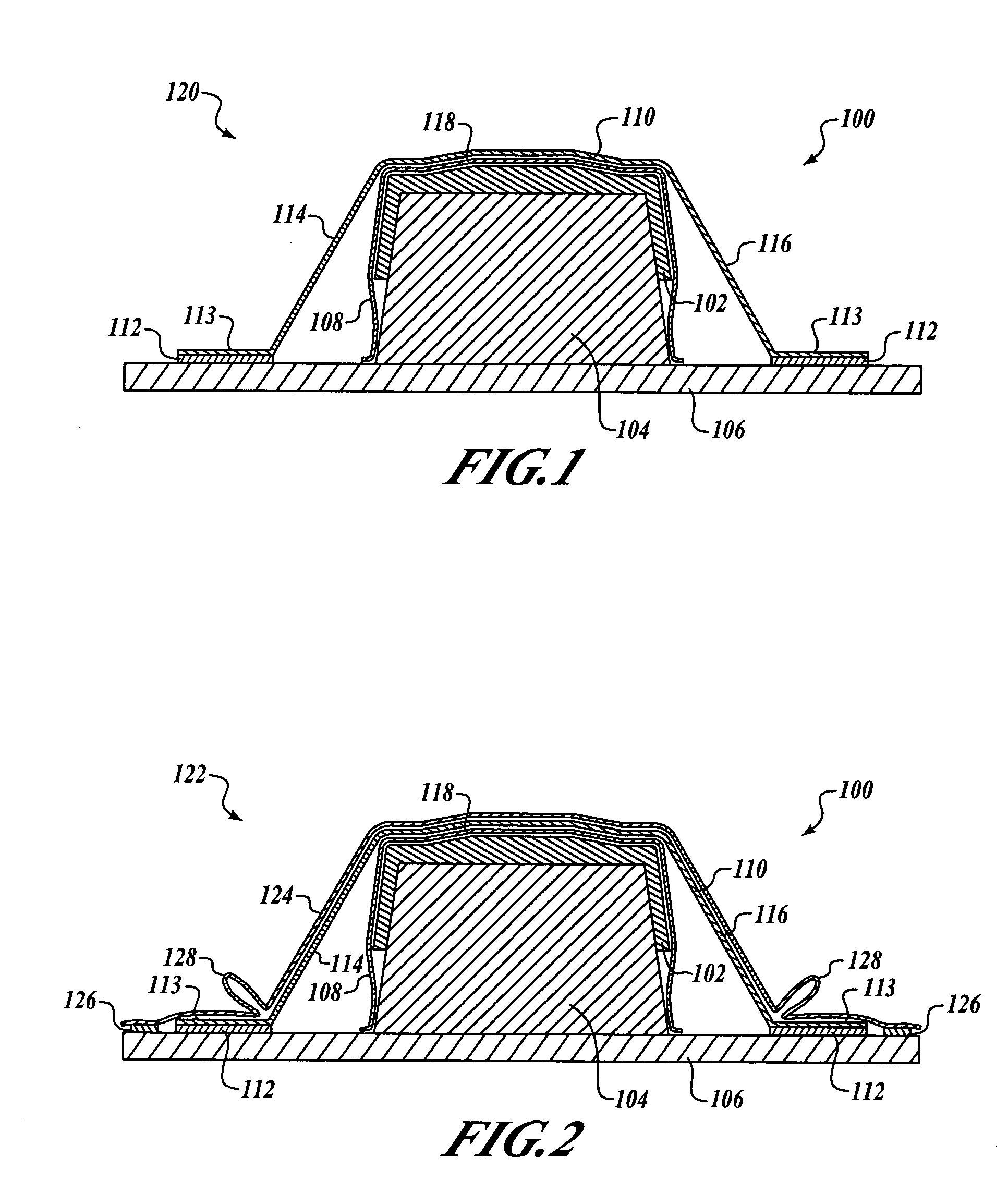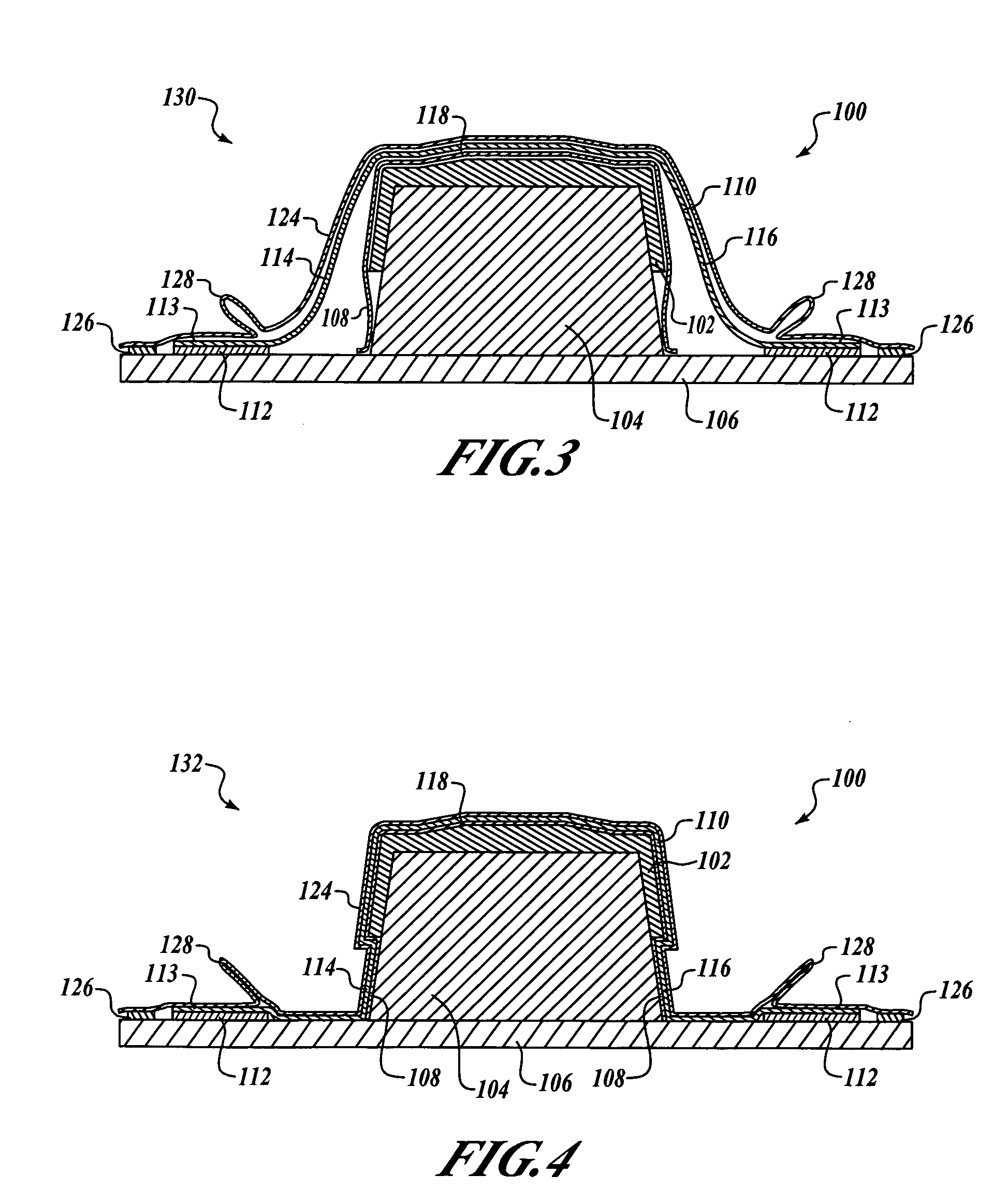Apparatus and methods for processing composite components using an elastomeric caul
a technology of elastomeric caulus and composite components, applied in the field of composite materials processing, can solve the problems of increasing manufacturing costs, increasing manufacturing costs, and prior art processes for forming composite components susceptible to so as to reduce fiber deformation and wrinkles of composite components, the effect of reducing costs
- Summary
- Abstract
- Description
- Claims
- Application Information
AI Technical Summary
Benefits of technology
Problems solved by technology
Method used
Image
Examples
Embodiment Construction
[0015] The present invention relates to apparatus and methods for processing composite components using an elastomeric caul. Many specific details of certain embodiments of the invention are set forth in the following description and in FIGS. 1-7 to provide a thorough understanding of such embodiments. One skilled in the art, however, will understand that the present invention may have additional embodiments, or that the present invention may be practiced without several of the details described in the following description.
[0016]FIG. 1 is an end cross-sectional view of a forming system 100 for manufacturing a composite component 102 in accordance with an embodiment of the present invention. In this embodiment, the forming system 100 includes a lay-up mandrel 104 positioned on a base 106. In a first stage of operation 120, the uncured (or prepreg) composite component 102 is formed on the lay-up mandrel 104, and a release film 108 is positioned over the composite component 102. In t...
PUM
| Property | Measurement | Unit |
|---|---|---|
| thickness | aaaaa | aaaaa |
| pressure | aaaaa | aaaaa |
| temperature | aaaaa | aaaaa |
Abstract
Description
Claims
Application Information
 Login to View More
Login to View More - R&D
- Intellectual Property
- Life Sciences
- Materials
- Tech Scout
- Unparalleled Data Quality
- Higher Quality Content
- 60% Fewer Hallucinations
Browse by: Latest US Patents, China's latest patents, Technical Efficacy Thesaurus, Application Domain, Technology Topic, Popular Technical Reports.
© 2025 PatSnap. All rights reserved.Legal|Privacy policy|Modern Slavery Act Transparency Statement|Sitemap|About US| Contact US: help@patsnap.com



